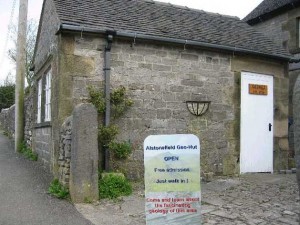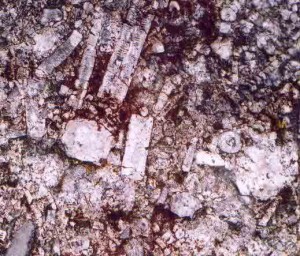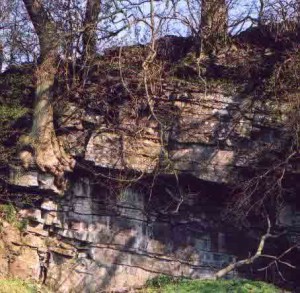The Geohut
When in Alstonefield, you might like to visit the Geohut – a small exhibition of the local geology. Here you will find a wide variety of rock samples from this area and explanations of their origin and of how geology affects the landscape we see around us.
The Geohut is on the road out towards Hartinton, by West View Farm. It is usually open at weekends and Bank Holidays and admission is free.
 Alstonefield’s ‘GeoHut’ won joint first prize in the 2009 ENI Geological Challenge. The photo shows Albert & Jill Benghiat (left), together with the other winners (for Westray Geological Exhibition in Orkney) at the formal presentation at the Geologists Association Meeting at Burlington House in London.
Alstonefield’s ‘GeoHut’ won joint first prize in the 2009 ENI Geological Challenge. The photo shows Albert & Jill Benghiat (left), together with the other winners (for Westray Geological Exhibition in Orkney) at the formal presentation at the Geologists Association Meeting at Burlington House in London.
The Geology of Alstonefield
The Geology of Alstonefield reflects the geology of the Peak District, which is the southernmost link of the Pennine Chain. Alstonefield lies on the extreme south of that chain, on an irregularly shaped limestone dome, known as the White Peak. This is about 20 miles long from North to South, stretching from Castleton to Ashbourne and 12 miles wide from East to West stretching from Matlock to Buxton. The Carboniferous limestone on which Alstonefield is situated is the oldest rock exposed in the district and is enclosed by the ‘horseshoe’ of the Dark Peak gritstone open to the South.
The limestone was formed about 300 million years ago when the region was a shallow lagoon and Britain lay just north of the Equator. In the lagoon the skeletons of sea creatures were trapped in seaweed and the floor was a shifting mud of shells and skeletons. The currents swayed the fronds of Sea Lilies or Crinoids until they died and their remains were then fossilised into the ‘Derbyshire screws’ seen on so many of the stones dug from gardens, turned up by farmers in their fields or casually placed in dry stone walls. Other shells were fossilised into the limestone: corals and brachiopods (limpet shaped creatures) can often be identified.
The edges of the limestone lagoon sloped into deeper water, where currents deposited fine muds and silts from rivers to the North. Limestones formed at the edges of the lagoon are therefore often darker and thinner: these can be easily observed along the Manifold Trail. Limestone formed in the shallow, clearer water has a purer constitution and is laid down in horizontal beds up to 600 metres thick.
At the end of the Carboniferous, distant continental collisions warped the limestone into the dome shape we find today. The warping induced fractures, through which hot mineral rich fluids could percolate. These deposited large mineral veins of lead ore, barytes, copper and calcite often running from East to West. These form the mineral wealth of the Peak and were extensively worked in parts of the parish; Lead in many places and Copper at Ecton at the extreme West.
Eventually the limestone lagoon was over-run by a large river delta from the North. The swampy delta developed a lush tropical vegetation, which after burial and compaction formed the coalfields we now find to the West and East of the Peak District.
Limestone is rather soluble and many streams and rivers have developed subterranean courses leading to the dry valleys we find in places such as Hall Dale. Dissolving limestone also contributes to the ‘sinkholes’ found dotted around the landscape.
Original Text & Photographs by Geoff Cohen, updated by Albert Benghiat May 2009



